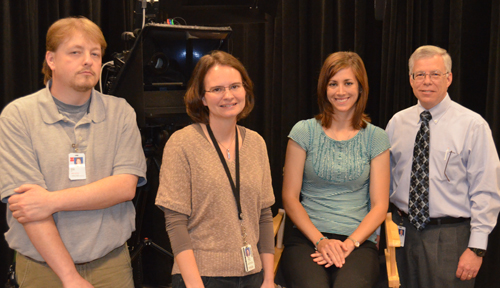Shannon Roth didn’t enroll in a physical therapy program to get into the filmmaking business.
But she did want to help people.
That’s how she became a scriptwriter, storyboard artist and even an actress – as part of the Healthcare and Emergency Responder Organization Education through Simulation (HEROES) Project, a UNMC effort to create training videos, aimed at disaster preparedness, which quickly and concisely explain how to perform necessary tasks.
Roth’s project is a collaboration between the College of Nursing and the School of Allied Health Professions, but HEROES is open to other disciplines getting involved, said Joe Norman, Ph.D., professor in the Division of Physical Therapy Education in the School of Allied Health Professions.
Roth’s videos on volunteer shelter training make up only one series – the HEROES project has also created short videos on topics such as biological and chemical disaster response, triage and hospital decontamination.
“We would be interested in adding more projects,” said Beth Beam, project coordinator. “There are opportunities for many types of UNMC students to make HEROES content, either for shelter training or other emergency preparedness concepts.”
Roth’s videos are designed to help volunteers in general population disaster relief shelters. People who need functional support services — assistance with tasks such as getting from a wheelchair to a cot — are sent to general population centers, where volunteers may be leery of providing the necessary functional support.
But the videos — reviewed and approved by Beam and Dr. Norman — provide support for shelter volunteers, who are often dealing with frightened people in stressful situations, Roth said.
“It’s not just a person talking,” she said. “The volunteers get to see how to do it, and that makes it a lot easier.”
Through the HEROES project, Roth and instructional technologist Stephen Smith have created videos on body mechanics, chair to wheelchair transitions, wheelchair to cot transfers and other topics to help these volunteers provide needed services safely and with confidence.
Although the aim is to help the shelter volunteers, the project also has advantages for the student filmmakers, Dr. Norman said.
“It’s helpful for the students to break down what we do, in order to teach someone,” he said. “This is exactly the skills that are going to be needed when they’re training a family to take a family member home.”
